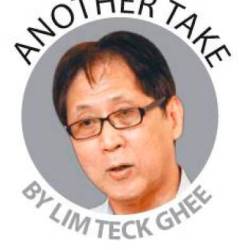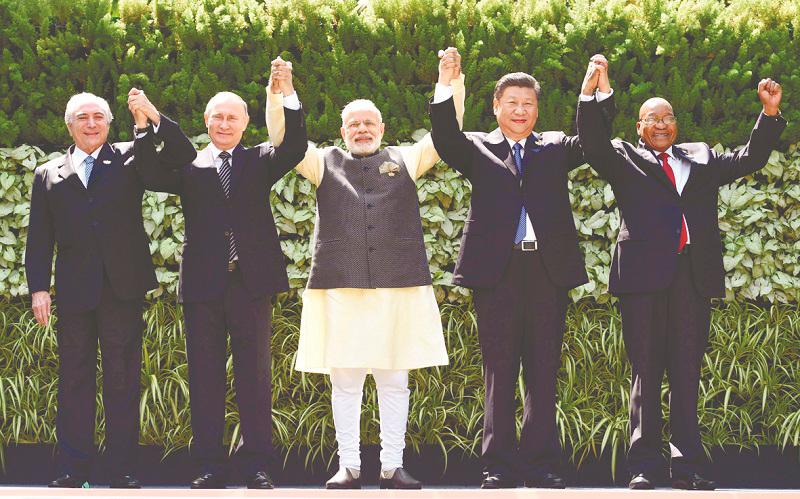AS expected, the Western media, in its sketchy coverage of the BRICS summit in Kazan, has continued its long-held partisan analysis, but with its spin directed
at Russia and President Vladimir Putin – for now, the West’s public enemy number one.
“Putin presents himself as champion of the developing world”, “Putin ends BRICS summit that sought to expand Russia’s global clout but was shadowed by Ukraine”, and “Inside Putin’s Alternate Reality: Warm Embraces and a Veneer of Normalcy” were among
the headline columns posted in the American media in their campaign to further demonise Putin and to influence readers to view BRICS as an inconsequential geopolitical grouping.
The American media’s barely concealed hostility to BRICS this time appears to have played second fiddle to what has been posted in the Japanese media, which has emerged as a strongly anti-BRICS echo chamber of the West. This positioning is surprising since BRICS members are among Japan’s biggest trading partners and export markets, and have played a key role in the rise and development of Japan.
According to Japan Times, “BRICS once again meet to complain and vent frustrations”. Nikkei Asia, a Japanese business media organisation targeting the regional market, had more neutral but still negative headlines: “As BRICS expands, its recruits chase disparate goals” and “Russia wants BRICS to become Opec (Organisation of the Petroleum Exporting Countries) for wheat. Will members buy it?”.
Summit highlights for Asean and Asia
What BRICS achieved in Kazan can be seen in different ways from what has appeared in the Western and Japanese media.
Firstly, it has grown from the original five countries (Brazil, Russia, India, China and South Africa). Four were added in January (Egypt, Ethiopia, Iran and United Arab Emirates), and it now has another potentially 13 new members.
Countries that have become “partner states” as a prelude to full membership are: Turkey, Indonesia, Algeria, Belarus, Cuba, Bolivia, Malaysia, Uzbekistan, Kazakhstan, Thailand, Vietnam, Nigeria and Uganda.
This expansion of BRICS has made the BRICS+ group an even more formidable geopolitical and economic powerhouse.
Before the Kazan summit, the nine BRICS members were estimated to comprise 40% of the world’s population and to account for more than one-third of world GDP(gross domestic product) – measured at purchasing power parity (PPP). By contrast, the G7 nations have less than 10% of the world’s population and under 30% of GDP (PPP).
With the additional 13 new members and a combined economy, estimated at US$30 trillion (RM126.64 trillion), the clout of the enlarged BRICS+ group of 3.5 billion people has the potential to succeed where efforts
at uniting and enhancing the progress of the less developed nations through the Non-Aligned Movement and Group of 77 in the United Nations had earlier failed.
According to a report from the Carnegie Endowment for International Peace: “The coalition (BRICS) can use this leverage not only to demand a more equitable international order but also to act on those ambitions, for instance by establishing a parallel energy trading system, deepening commercial links among members, creating an alternative system of development finance, reducing dollar dependence in foreign exchange transactions and deepening technology cooperation in fields from artificial intelligence to outer space.”
Secondly, four member countries of Asean are now partner states and are likely to be full members in the next summit.
According to Piti Srirangam, executive director of the Asean Foundation: “Being a member of BRICS would open up trade and investment opportunities, so the question is ‘why not?’ The bloc has members from all over the world, but none from Southeast Asia yet.”
It is not just trade and investment benefits the Asean countries and other aspiring members are looking out for. They, together with other participating countries, endorsed the Kazan Declaration issued on Oct 23. Titled “Strengthening Multilateralism for Just Global Development and Security”, the 43-page, 134-point document calls
for a “more representative, fairer international order, a reinvigorated and reformed multilateral system, sustainable development and inclusive growth”.
A third highlight was the announcement at the summit of the agreement by its two founding members, India and China, to resolve their border and other disputes, stabilise relations and move to a new era of peace, security and cooperation. The timing of this announcement is especially significant for BRICS+ development. While not a direct issue of the summit itself, the agreement will have ripple effects across a wide range of global and regional areas of contestation and concern – military, political and economic.
If the two countries can reset their relationship according to what Indian Prime Minister Narendra Modi has described as “mutual trust, mutual respect and mutual sensitivity”, they will provide a model of conflict resolution and peaceful coexistence for members of BRICS derided by the Western media as doomed to failure as a result of internal disputes and rivalries.
They will also provide for the rest of the world an example of how to contest the current rules-based order crafted by the US and Western allies to entrench Western hegemony and dominance through manipulation of dissension and divisions of nations not aligned with or supportive of the West.
Lim Teck Ghee’s Another Take is aimed at demystifying social orthodoxy.
Comments: letters@thesundaily.com










